For years after my abortion, I carried a weight I couldn’t quite name. I knew I felt sorrow. I knew I was hurting. I knew something was broken inside of me. But I didn’t know how to separate the voices in my head from the whispers of God.
I thought guilt and shame were the same thing.
I believed I had to live with both—forever.
It felt like my permanent punishment for the decision I had made.
But I was wrong.
Guilt and shame are not the same. And understanding the difference didn’t just help me intellectually—it transformed my healing journey.
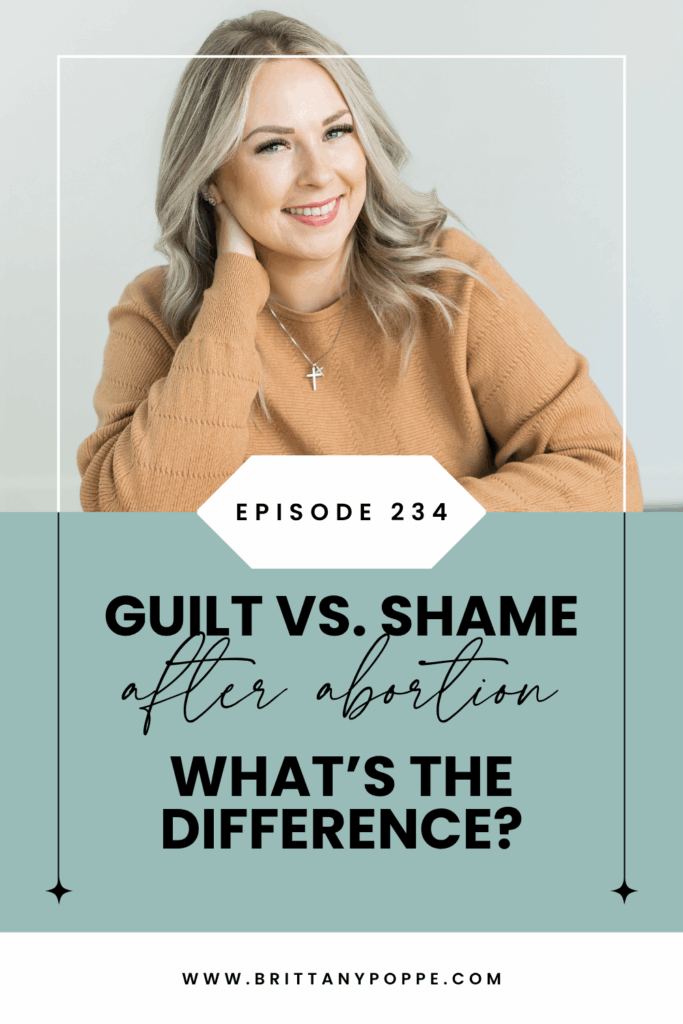
Guilt vs. Shame: What’s the Difference?
Guilt says, “I did something bad.”
Shame says, “I am bad.”
One confronts an action.
The other attacks your identity.
Guilt acknowledges a choice you’ve made. It can actually be healthy—it’s our heart’s way of saying, “This isn’t right. This grieves God.” In a spiritual sense, guilt can serve as an alarm that wakes us up and leads us to repentance.
But shame? Shame doesn’t bring you closer to God.
Shame hides you from Him.
Shame is what made Adam and Eve run and cover themselves in the garden. It’s what makes us feel unworthy to pray, to attend church, to receive forgiveness. Shame says, “You are now defined by what you’ve done. There’s no going back.”
And here’s the thing—if we don’t deal with our guilt before God, it will morph into shame.
And shame will trap you.
How Guilt & Shame Work Together
For many post-abortive women, guilt is the first feeling to arrive—and often, it comes quietly. Maybe you didn’t feel it right away. Maybe it didn’t hit until years later, when you were holding a child in your arms… or when a sermon brushed up against your story… or in the middle of the night when no one else was around.
That initial guilt can stir something deep within your soul. And it’s not always a bad thing.
Guilt, when brought to God, leads to healing.
But guilt left unaddressed grows into shame—and shame isolates.
Shame is the enemy’s tool to keep you stuck. It pushes you into hiding, just like it did to me. I felt like if anyone knew the full story, they’d walk away. I assumed that because I had made a decision I couldn’t undo, I was permanently disqualified from peace.
But that’s a lie.
And if you’re believing that too, I want to gently but boldly remind you: You are not beyond healing.
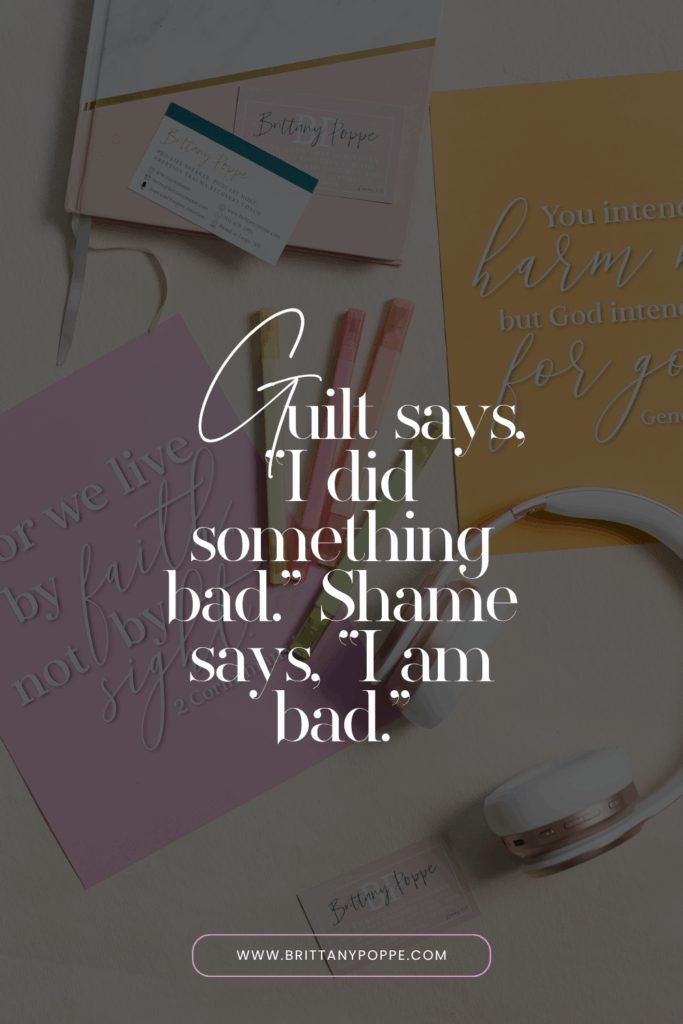
The Biblical Path to Freedom
Here’s the truth that changed everything for me:
“If we confess our sins, He is faithful and just to forgive us our sins and to cleanse us from all unrighteousness.”
— 1 John 1:9
God doesn’t ask us to clean ourselves up before we come to Him. He simply asks us to come.
He already knows the whole story. And His response is mercy.
When you confess your sin—not as a way of shaming yourself again and again, but as an act of surrender—He meets you there. Not with condemnation, but with cleansing. Not with rejection, but with restoration.
Guilt may have started the journey. But shame doesn’t get the final say. Jesus does.
And He’s already carried it all to the cross.
What Healing Actually Looks Like
Healing from guilt and shame isn’t about forgetting what happened.
It’s about seeing it through the lens of redemption.
It’s waking up each day and remembering:
🟢 I am no longer who I was.
🟢 I am not defined by that decision.
🟢 I am forgiven.
🟢 I am free.
You don’t have to re-confess your abortion every single day. You don’t have to keep begging God to forgive you. You don’t have to live under a constant cloud of spiritual punishment.
The cross was enough.
And now you get to walk in that freedom.
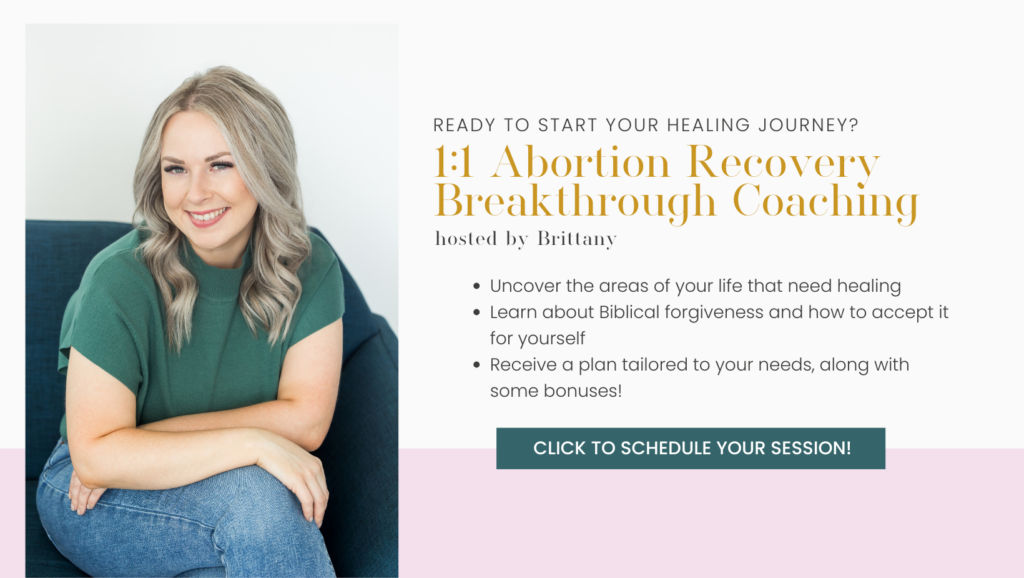
Final Encouragement
Friend, if no one has ever told you this:
You’re not unlovable.
You’re not dirty.
You’re not too far gone.
You don’t have to keep carrying this shame.
Today, take the first step.
Recognize the difference between guilt and shame.
Bring your guilt before the One who can handle it.
And leave your shame at the feet of Jesus.
He already paid for it.
He already saw you.
And He still says, “Come to Me.”
Pin for reading later! ⬇️
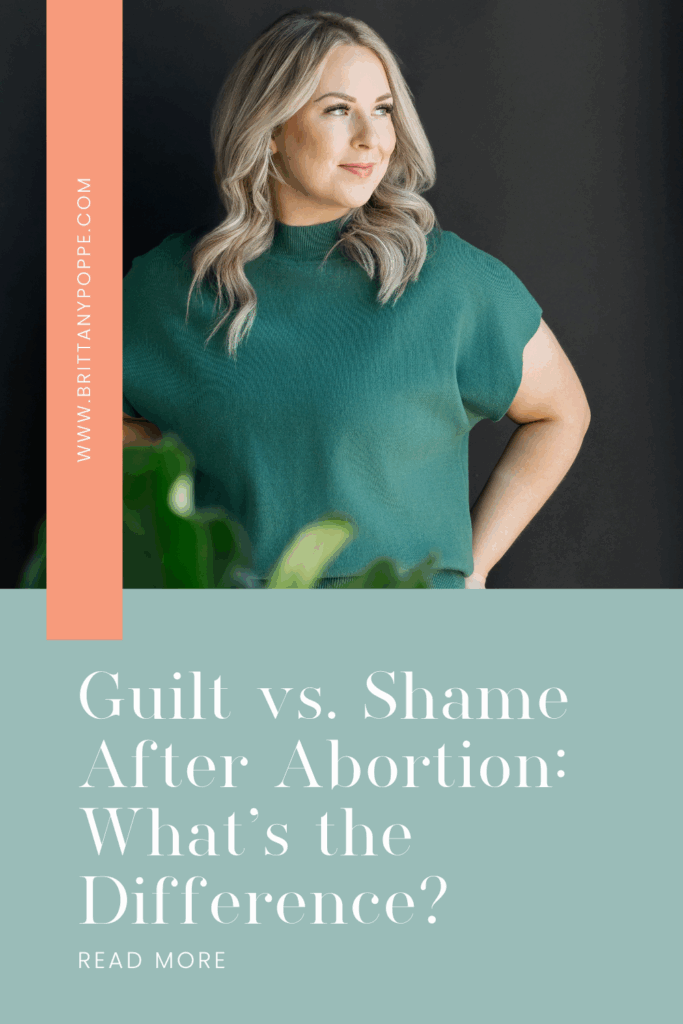
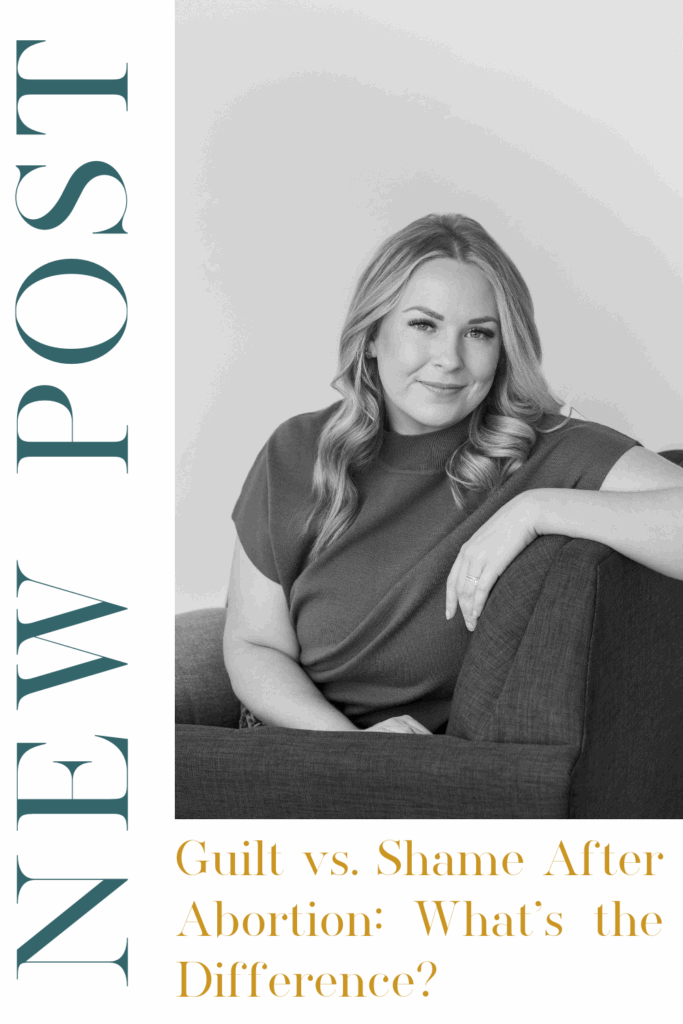
View comments
+ Leave a comment